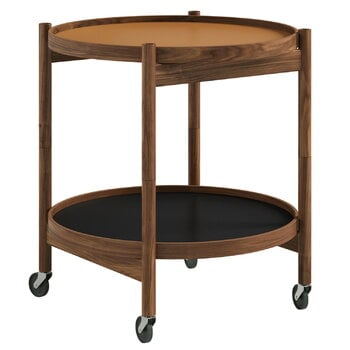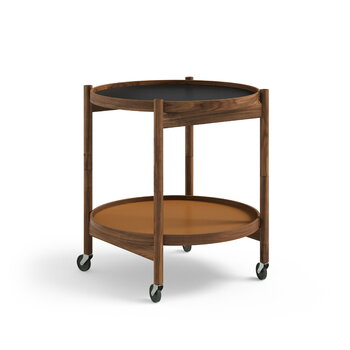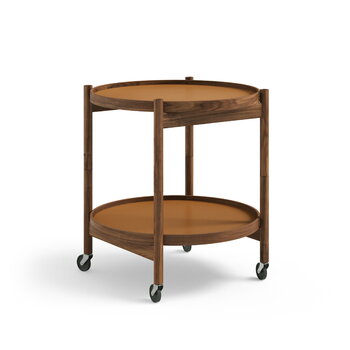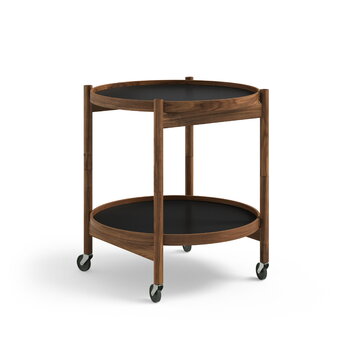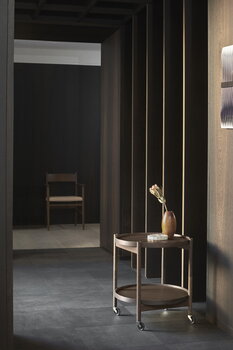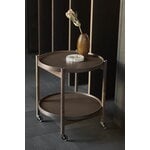Brdr. Krüger's Bølling tray table, designed by Hans Bølling, is a Danish design classic from 1963. The two-tier table can be used, for example, as a bar cart or a side table in the living room or as a bedside table in the bedroom.
The round trolley is a fine example of the playful functionalism typical of Danish design, with its gist lying in the reversible trays in two different colours: you can turn the trays around and choose whether you prefer them in black or cognac, or perhaps the upper tray in one shade and the lower one in the other. Turning the trays around also offers a quick way to update your home decor! The Bølling trolley is made in Denmark.
